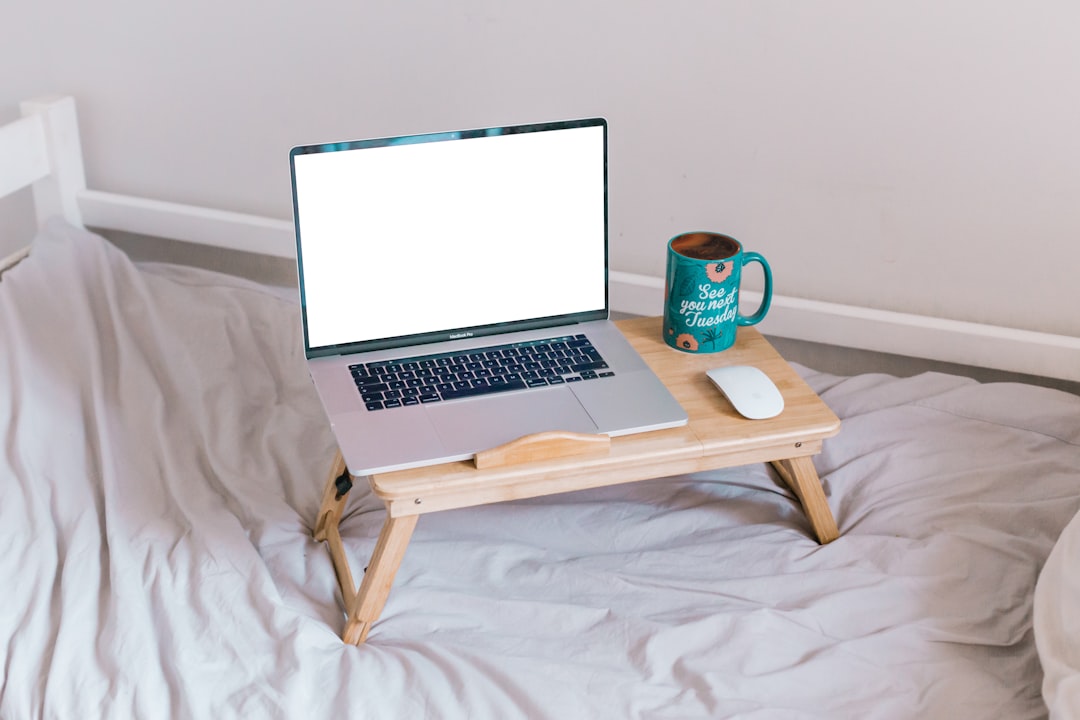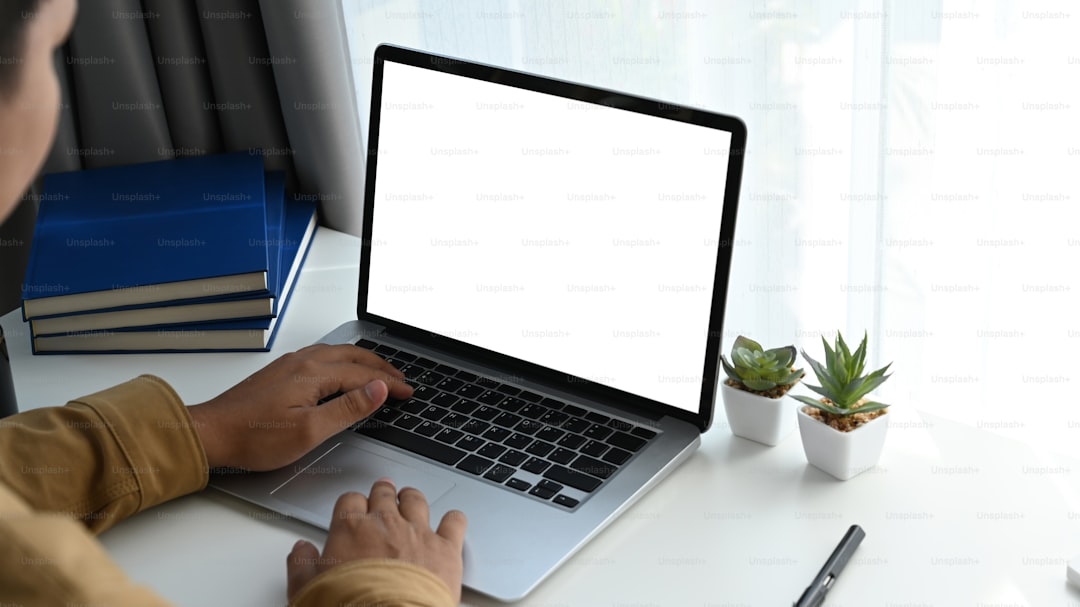How to Build a Minimalist Wardrobe for Nomad Life

Introduction
Living a nomadic lifestyle means your home is wherever you choose to set down your pack. The freedom to move from city to desert, mountain to beach comes with a unique set of challenges, and one of the most persistent is clothing. Too many items add weight, create clutter, and force you to make decisions you don’t have time for. Too few items can leave you unprepared for sudden climate shifts or cultural expectations. A minimalist wardrobe solves both problems. It gives you exactly what you need, keeps your pack light, and removes the mental load of “what should I wear today?”
This guide walks you through the philosophy behind minimalist dressing, the essential building blocks of a versatile wardrobe, how to choose fabrics and colors that work across borders, and practical steps to curate, pack, and maintain your clothing collection while on the move.
Why Minimalism Matters for Nomads
Reduce Physical Load
Every gram counts when you’re traveling by train, bike, or on foot. A streamlined wardrobe cuts down on the weight you carry, leaving more room for gear, souvenirs, and food.
Simplify Decision Making
When you have a limited set of pieces that all mix and match, you spend less time staring at a crowded closet and more time exploring new places.
Lower Environmental Impact
Buying fewer, higher‑quality items means less waste, fewer resources used in production, and a smaller carbon footprint.
Enhance Adaptability
A well‑chosen minimalist set can be layered, re‑styled, and repurposed for a range of climates, activities, and cultural norms.
Core Principles of a Minimalist Nomad Wardrobe
- Versatility – Each piece should work in multiple outfits and climates.
- Quality Over Quantity – Invest in durable fabrics that age well.
- Neutral Palette – Colors that complement each other reduce the number of items needed.
- Layerability – Build outfits from base layers to outer shells.
- Functionality – Choose items that serve a purpose beyond aesthetics, such as quick‑dry, UV protection, or hidden pockets.
Step‑by‑Step Guide to Building Your Wardrobe
1. Assess Your Travel Profile
Start by answering a few simple questions:
- What climates will you encounter most often?
- How many days will you be on the road between laundry opportunities?
- What activities dominate your itinerary (urban exploration, hiking, beach days, work meetings)?
- Are there cultural dress codes you need to respect?
Write down the answers. This snapshot will shape the specific garments you select.
2. Choose a Color Scheme
Pick a base color that works well with almost everything – classic choices include charcoal, navy, olive, or earth brown. Add one or two accent colors that complement the base and can be swapped in for visual interest. Limit the palette to three colors total; this maximizes mix‑and‑match potential while keeping the total piece count low.
3. Identify the Essential Categories
Below is a list of categories that cover most nomadic scenarios. For each, note the minimum number of items you need, then adjust based on your travel profile.
Tops
- Base Layer Tops – 2 to 3 lightweight, moisture‑wicking shirts.
- Mid‑Layer Shirts – 2 long‑sleeve button‑downs that can be dressed up or down.
- Casual T‑Shirts – 2 to 3 crew or v‑neck tees in neutral tones.
Bottoms
- Travel Pants – 1 pair of stretchy, quick‑dry trousers.
- Casual Shorts – 1 pair of convertible or lightweight shorts.
- Skirt or Dress – Optional for those who prefer a single‑piece option; choose a style that can be layered.
Outer Layers
- Lightweight Rain Jacket – Waterproof, breathable, with a hood.
- Insulating Layer – A packable fleece or down jacket for colder climates.
Underwear & Socks
- Underwear – 4 to 5 pairs of breathable, quick‑dry briefs or boxers.
- Socks – 4 to 5 pairs of merino wool or synthetic blend; include one low‑cut and one thicker pair for hiking.
Specialty Items
- Swimwear – 1 pair of board shorts or a swim brief.
- Work‑Ready Blazer or Smart Shirt – If you need to attend meetings or events.
- Hat & Gloves – Choose based on climate extremes.
4. Select Fabrics That Perform
| Fabric | Benefits | Typical Uses |
|---|---|---|
| Merino Wool | Regulates temperature, resists odor, quick‑dry | Base layers, socks, mid‑layer sweaters |
| Nylon/Polyester Blend | Lightweight, water resistant, durable | Travel pants, rain jacket, shorts |
| Tencel/Lyocell | Soft, breathable, environmentally friendly | Casual shirts, dresses |
| Wool‑Blend Fleece | Warm, compressible, dries quickly | Insulating jacket |
| Stretch Denim (or cotton‑spandex) | Comfortable, versatile, can be dressed up | Smart casual shirts, optional blazer |
When possible, choose fabrics that can be washed in a sink and dry in a few hours. This reduces the number of items you need between laundry cycles.
5. Test Fit and Function
Before committing, try each piece on with the other items you plan to own. Perform a quick “mix‑and‑match” test:
- Can the base layer be worn alone in warm weather?
- Does the mid‑layer pair well with both the rain jacket and the insulating jacket?
- Are the pants comfortable enough for a day hike yet smart enough for a café meeting?
If any piece feels out of place, replace it with an alternative that better meets the criteria.
6. Optimize Packing Size
For each garment, consider the following tricks:
- Roll vs. Fold – Rolling reduces creases and saves space for most casual items.
- Compression Bags – Use sparingly for bulkier items like the down jacket; over‑compression can damage insulation.
- Packing Cubes – Assign a cube for tops, another for bottoms, and a third for underwear and accessories. This organization speeds up finding items on the road.
7. Create a Packing Checklist
Write a concise checklist that you can review before each departure. Example format:
- Base layer tops (2)
- Mid‑layer shirts (2)
- Casual tees (3)
- Travel pants (1)
- Convertible shorts (1)
- Light rain jacket (1)
- Packable fleece (1)
- Underwear (5)
- Socks (5)
- Swimsuit (1)
- Hat (1)
- Gloves (1)
Check off each item as you place it in your bag. This eliminates forgotten pieces and ensures consistency.
8. Establish a Laundry Routine
Even the best minimalist wardrobe needs regular cleaning. Adopt a simple system:
- Frequency – Wash underwear and socks after every 2‑3 wears, tops after 4‑5 wears, and outer layers only when visibly dirty.
- Method – Use a travel sink, a biodegradable soap bar, and a small laundry bag. Agitate for a minute, rinse, and wring out. Hang in a well‑ventilated area or use a portable drying rack.
- Drying Time – Merino and synthetic fabrics dry in 2‑3 hours in sunny conditions. Plan laundry on days when you have a flexible schedule.
9. Review and Refine Annually
Every 12 months, evaluate how well your wardrobe served you. Ask:
- Which items never got used?
- Which pieces wore out faster than expected?
- Did any new activity require an additional garment?
Replace the under‑performers with better options, keep the successful ones, and adjust the count if you found you consistently needed more or fewer items.
Detailed Look at Each Wardrobe Piece
Base Layer Tops
Purpose – Provide moisture management, temperature regulation, and odor resistance.
Key Features
- 100 % merino wool or a merino‑blend for natural odor control.
- Lightweight (under 150 g) for easy layering.
- Neck design that can be worn open or closed.
Styling Tips
- Pair with a button‑down for a smart‑casual look by leaving the top open.
- Tuck into travel pants for a polished silhouette during meetings.
Mid‑Layer Shirts
Purpose – Serve as the main visual layer, offering modest warmth and the ability to transition from casual to formal.
Key Features
- Stretch cotton‑spandex or a Tencel‑cotton blend for comfort.
- Button front for easy layering or removal.
- Neutral color (navy or charcoal) that works with most bottoms.
Styling Tips
- Roll up sleeves for a relaxed vibe in warm climates.
- Add a lightweight blazer over the shirt for business settings.
Casual T‑Shirts
Purpose – Provide a quick, comfortable option for hot days or downtime.
Key Features
- Crew or v‑neck depending on personal preference.
- Reinforced seams at the shoulders to extend lifespan.
Styling Tips
- Layer under a rain jacket for a simple, functional outfit.
- Wear alone with shorts for beach or city strolls.
Travel Pants
Purpose – Offer durability, flexibility, and climate adaptability.
Key Features
- Quick‑dry nylon‑spandex blend with a brushed interior for warmth.
- Zippered pockets that keep valuables secure.
- Convertible design (zip‑off legs) if you want shorts without an extra pair.
Styling Tips
- Pair with a casual tee and rain jacket for a day of sightseeing.
- Dress up with a button‑down shirt and a smart blazer for evening events.
Convertible Shorts
Purpose – Provide a lightweight lower‑body option for warm weather while still being functional.
Key Features
- Water‑resistant fabric that dries quickly.
- Deep pockets for phones and small accessories.
Styling Tips
- Combine with a merino base layer top for a minimalist look on a hiking trail.
Skirt or Dress (Optional)
Purpose – Offer a single‑piece solution that can be layered for modesty or warmth.
Key Features
- Mid‑length, A‑line cut that works in both casual and semi‑formal settings.
- Fabric such as Tencel or a soft wool‑blend for comfort.
Styling Tips
- Add a lightweight fleece underneath for cooler evenings.
- Pair with a belt to change the silhouette quickly.
Light Rain Jacket
Purpose – Protect against wind and rain while remaining breathable.
Key Features
- Waterproof membrane (e.g., PU coating) with sealed seams.
- Adjustable hood that can be stowed away.
- Packable size that fits into a small compression sack.
Styling Tips
- Wear over any outfit; the neutral color ensures it does not clash.
Insulating Layer
Purpose – Provide warmth during cold nights or high‑altitude travel.
Key Features
- 800 fill‑power down or high‑loft synthetic insulation.
- DWR‑treated outer shell for light rain resistance.
Styling Tips
- Use as a standalone top when temperatures drop, or layer under the rain jacket for combined protection.
Underwear & Socks
Purpose – Offer comfort, hygiene, and odor control.
Key Features
- Merino wool underwear that stays cool in heat and warm in cold.
- Socks with cushioning at the heel and toe, quick‑dry properties.
Styling Tips
- Rotate colors to keep the wardrobe visually interesting even in hidden layers.
Specialty Items
- Swimwear – Choose a board short with a zip fly for easy removal at beaches or pools.
- Work‑Ready Blazer – A unstructured, soft‑shoulder blazer in a neutral hue can be worn over a merino shirt for remote‑work video calls.
- Hat & Gloves – A wide‑brim hat for sun protection and lightweight gloves for cooler climates.
Packing Strategies for Different Travel Modes
Backpack‑Only Travel
- Prioritize the lightest fabrics.
- Use compression sacks only for the insulating jacket.
- Keep socks and underwear in a separate, quick‑access pocket.
Carry‑On Luggage
- Take advantage of the extra space to include a spare pair of travel pants.
- Pack a small laundry detergent sachet for on‑the‑go washing.
Long‑Term Shipments
- If you are staying in one place for months, consider a secondary “home” wardrobe that includes a few extra items like a heavier coat.
- Ship the secondary set once you settle, then rotate it back home when you move again.
Maintenance Tips While on the Road
- Spot Clean – For small stains, use a damp cloth and mild soap. This reduces the need for full washes.
- Repair Kit – Carry a small kit with needle, thread (matching your primary colors), fabric glue, and a few spare buttons. Quick repairs extend garment life.
- Ventilation – After each use, hang garments in a well‑ventilated area to prevent mildew, especially in humid climates.
- Sun Protection – Store fabrics out of direct sunlight for extended periods to avoid fading and fiber weakening.
Adapting to Cultural Norms
Different regions have varying expectations for modesty and dress codes. Your minimalist wardrobe can respect these norms without adding bulk.
- Middle East & South Asia – Add a lightweight, breathable long‑sleeve shirt and a loose‑fit pair of trousers. Both can be layered under the same jacket you already own.
- Europe (formal settings) – The smart blazer combined with a button‑down shirt and travel pants creates a polished look suitable for cafés, co‑working spaces, or business meetings.
- South America (casual vibe) – A simple tee and shorts combo is acceptable in most urban areas; just keep a shirt handy for entering churches or upscale restaurants.
Real‑World Example: A Week in Three Climates
Imagine a nomad spending a week traveling from a tropical city, to a mountainous town, and finally to a coastal village. Here’s how the minimalist wardrobe performs:
| Day | Climate | Outfit | Why It Works |
|---|---|---|---|
| 1‑2 | Hot & Humid | Merino base top + casual tee + convertible shorts + rain jacket (optional) | Breathable fabrics keep you cool; rain jacket ready for sudden showers. |
| 3‑4 | Cool Mountain | Merino base top + mid‑layer shirt + travel pants + fleece + rain jacket | Layering provides warmth; waterproof outer layer protects from wind. |
| 5‑7 | Mild Coastal | Merino base top + casual tee + travel pants (rolled up) + light rain jacket (evening) | Comfortable for beach walks; jacket available for cooler evenings. |
Only six core pieces are needed, demonstrating the power of versatile layering.
Budgeting for a Minimalist Wardrobe
Investing in quality items may feel costly upfront, but the long‑term savings are significant.
| Category | Approximate Price Range (USD) | Recommended Brands |
|---|---|---|
| Merino Base Layers | 40‑80 per piece | Icebreaker, Smartwool |
| Travel Pants | 60‑120 | Prana, Columbia |
| Rain Jacket | 80‑150 | Patagonia, REI Co‑op |
| Insulating Jacket | 120‑250 | Arc’teryx, Mountain Hardwear |
| Underwear & Socks (multipack) | 30‑70 | ExOfficio, Darn Tough |
| Smart Blazer | 100‑200 | Uniqlo, J.Crew |
Total estimated investment: 500‑900 USD. This covers durable items that can last several years, reducing the need for frequent replacements.
Frequently Asked Questions
How often should I replace items in a minimalist wardrobe?
When a garment shows signs of fabric breakdown, loss of insulation, or persistent odor despite washing, it’s time to replace it. For high‑use pieces like underwear and socks, a 12‑month cycle is typical. Outer layers often last 3‑5 years with proper care.
Can I travel with just one pair of shoes?
It is possible, but most nomads keep two: a lightweight sneaker for walking and a slip‑on sandal or casual shoe for hot climates. Choose shoes that dry quickly and have good arch support.
What about laundry in places without washing facilities?
Pack a small travel sink bag and a biodegradable soap bar. Hand‑wash in a bathtub or basin, wring out, and hang to dry. A portable travel line can be set up in a balcony or courtyard.
Is it okay to wear the same outfit multiple days in a row?
Yes, especially if the fabrics are odor‑resistant. Merino wool can be worn several days before washing without developing a noticeable smell.
How do I handle sudden cold snaps?
Add a thermal base layer (thin merino long‑sleeve) and layer the fleece under the rain jacket. The modular nature of the wardrobe lets you add or remove layers quickly.
Final Thoughts
A minimalist wardrobe is not about sacrificing style or comfort; it is about intentionality. By focusing on versatile pieces, neutral colors, and high‑performing fabrics, you free yourself from the burden of excess baggage and gain the flexibility to move, work, and explore wherever the road leads. Follow the step‑by‑step process outlined in this guide, adjust it to your personal travel profile, and you will discover a clothing system that feels like a natural extension of your nomadic lifestyle.
Happy travels, and may your pack always be light and your outfits always be ready for the next adventure.
Random Posts

Top Resources Every Aspiring Nomad Should Know
Discover the ultimate toolkit for future digital nomads: vetted visa guides, budgeting apps, remote-work platforms, cloud storage tips and gear reviews, all in one concise reference to launch your location-independent life.
1 month ago

Smart Finance Tax and Legal Strategies for Nomads Plus Health and Travel Insurance Plans
Discover how digital nomads can protect earnings and stay compliant with smart tax residency, corporate structures, and the right health and travel insurance, so you can roam worry-free.
1 month ago

Essential Packing Checklist for New Nomads
Discover the ultimate packing checklist for new nomads: essential items, smart organization tips, and how to customize your gear for any climate or remote work setup, ensuring stress free travel.
2 weeks ago

Explore the Top Cities for Remote Work with Insider Travel Tips and Permit Advice
Discover the best cities for remote work, where fast internet, low living costs, vibrant culture, and easy visa options meet local insider tips to help you live and work abroad hassle free.
2 months ago

Boost Your Output A Guide to Remote Work Essentials
Turn your home office into a high performance hub with proven habits, tools, and mindset tricks that boost productivity while keeping work life balance intact.
3 weeks ago
Latest Posts

Essential Software Every Remote Professional Should Use
Master remote work with essential tools: instant messaging like Slack, high definition video calls such as Zoom, and asynchronous voice apps. Streamline communication, stay connected and boost productivity.
1 day ago

Mastering Remote Work Productivity for Digital Nomads and Freelancers
Learn proven habits, tools, and tactics that help digital nomads and freelancers stay focused, deliver quality work, and maintain a sustainable lifestyle while traveling the world.
1 day ago

Tech‑Friendly European Towns Perfect for Remote Living
Discover Europe’s best small towns where fast internet, affordable living and vibrant tech communities let you work remotely while soaking up historic charm, lakeside views or mountain air.
1 day ago